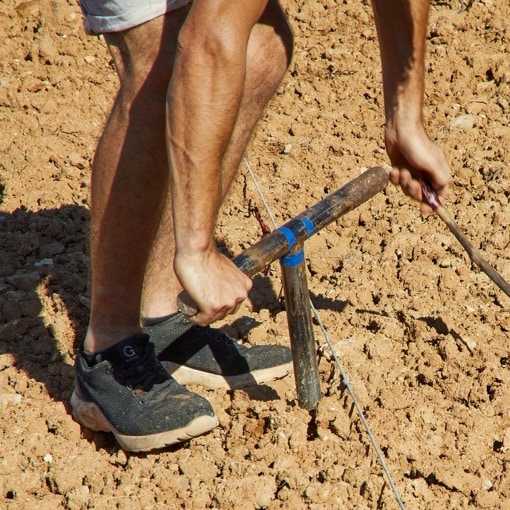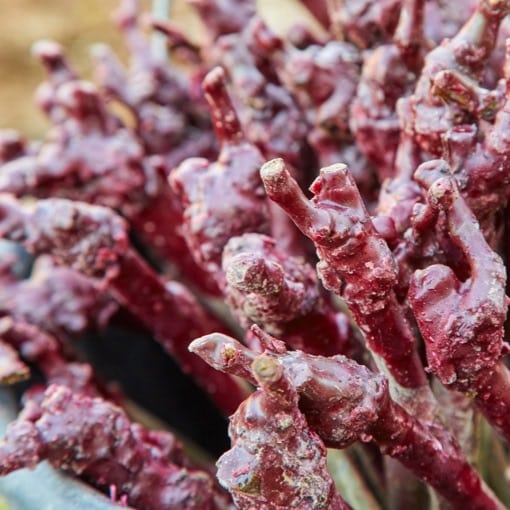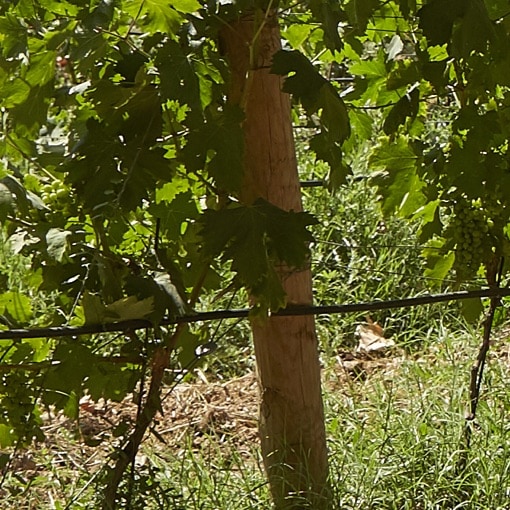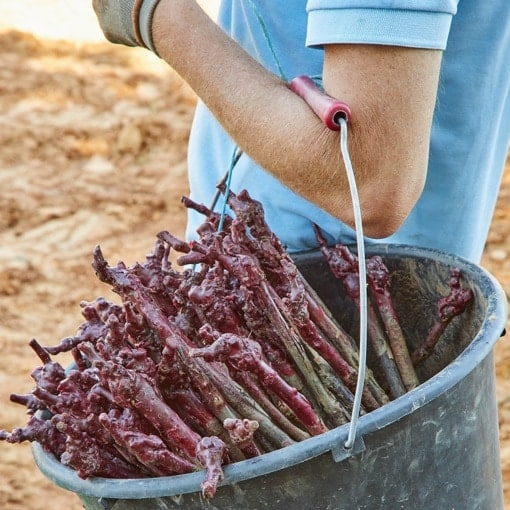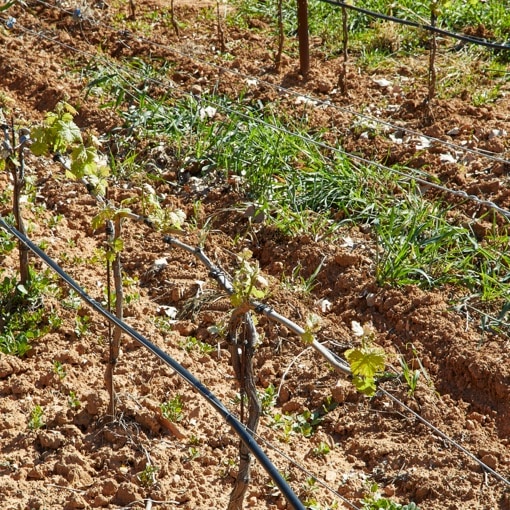
Our grape varieties
Under the Provencal mistral, our estate covers 18 hectares of which almost 10 hectares are vineyards including 1.5 hectares planted with AOC. All the rest is IGP. The white grape varieties are Vermentino and Sauvignon Blanc. We have chosen Syrah, Grenache and Cinsault for the red wine parcels. The planted areas take into account our needs, the harmony of taste and the rhythm of nature. The longevity of the vines and the objectives of quality have guided us towards the choice of controlled yields.

Winemaking
The grapes are harvested by hand in 25 kg boxes to respect the grapes and avoid oxidation. The whites and rosés are picked very early in the morning, before sunrise until 11am to obtain the freshest possible grapes to guarantee good quality.
For the white wine, the grapes are placed in the press, which extracts the juice that flows through the drains. We select the juices, known as “jus de gouttes” and “jus de presses”, and vinify them separately. The must is sent to refrigerated stainless steel vats and a few days’ stabulation at a low temperature, below 10°C, brings substance and aromas to the wine. The must is then settled, separating the clear juice from the deposit that has formed at the bottom of the tank. The alcoholic fermentation process that we favour keeps the primary aromas of the grapes. At the end of fermentation, when the yeasts have broken down all the sugars into alcohol, the wine is racked. The wine is then aged. The white wine is vinified either in stainless steel vats or in barrels, following the same process, regardless of the container. The barrel ageing gives the wine a woody taste and a microoxygenation; it is with the help of the oenologist that we decide on the blend according to the type of wine determined.
For the Rosé, it is the same protocol as for the White, with a longer contact time between the skin and the juice, to give this beautiful colour to the wine, bursting with Provencal sunshine. This short maceration is carried out in the press which has a closed cage and lasts only a few hours. For the Blanc, on the other hand, the juice flows directly into the filling.
As for the red wine, it is harvested during the day, the grapes are destemmed and sent to a vat to be vinified. The vatting period of two to three weeks then begins, which, together with the work of the yeasts, will give the wine its intense red colour and its aromas. The marc is then decanted after the wine has run off and placed in the press to extract the last drops, and the wines are then blended and malolactic fermentation begins. Finally, for at least one year, the wine is aged in barrels and vats.
Biological and rural values
It is out of conviction that we have chosen to go organic.
The estate has been pesticide-free since 1970, and we have chosen to preserve this healthy environment for the vineyard as well as for those who work and live there. We also produce olive oil from our olive grove.
Turning to natural farming practices is in harmony with our values and the soul of the property. In winter, we welcome 40 hives, the bees are in excellent conditions before their transhumance to give life to another precious nectar: a smooth and tasty honey with a dominant lavender flavour.
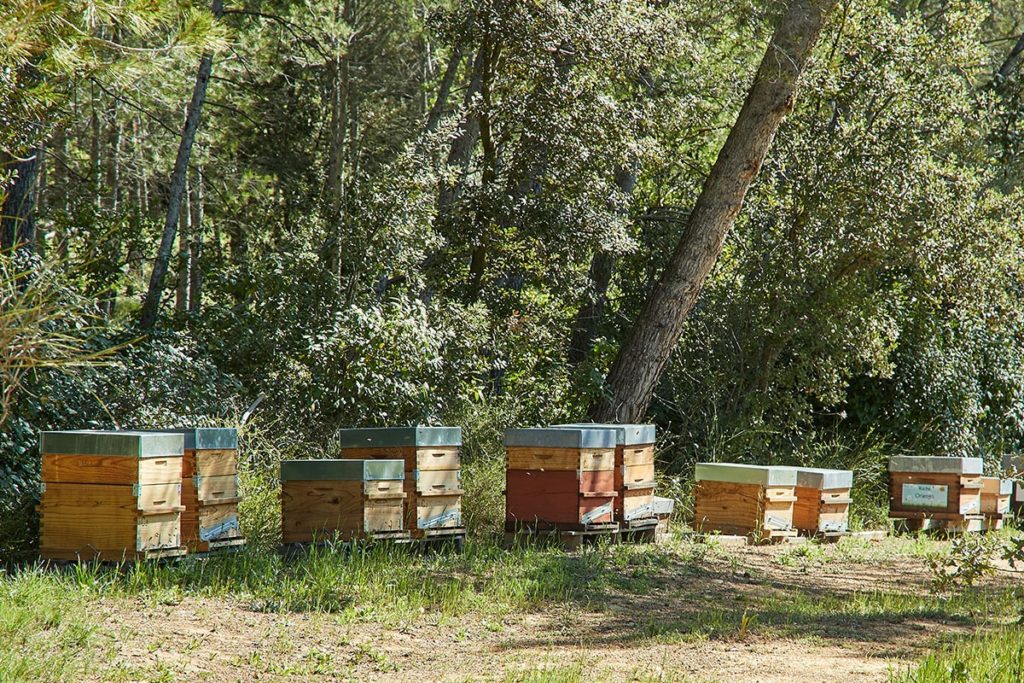
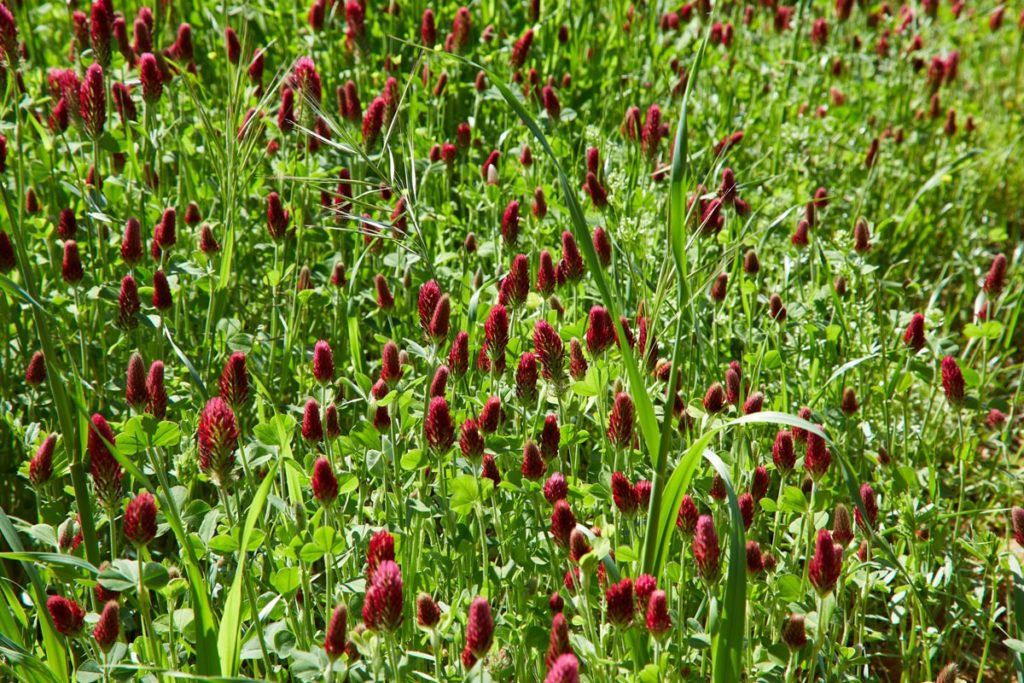
A protected vineyard
Committed to organic winemaking, we use only natural products. Fertilisers and soil improvers are all organic products, derived from animals or plants; sulphur and copper are used sparingly as we favour prevention and thus remain below the limits authorised by organic standards. We are proud to respect both the plant and the land and to be in perfect harmony with the generosity and rhythm of nature. In order to preserve a natural balance on the estate, we let the flowers of the fields colour the landscape in spring.
From vineyard maintenance to harvesting, the 6 key stages in the vineyard
The months of January to April are devoted to pruning, the maintenance of the trellising and the first passes with the inter-trellis to maintain the soil. In May, it is the period of disbudding: we patiently select the branches to keep. Everything is done slowly, precisely and by hand.
In June and July, it is time to work on the soil, treatments and trellising. This is also the season for green harvesting before the preparation of the harvest in August. This crucial moment of harvest begins at the end of August and lasts throughout September. The end of the year is devoted to the maintenance of the estate.
